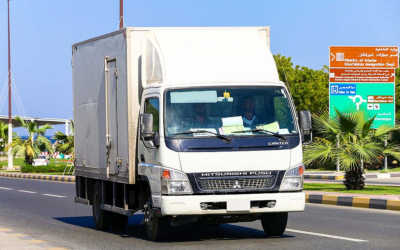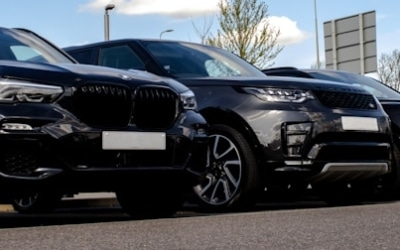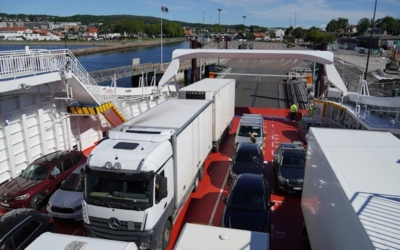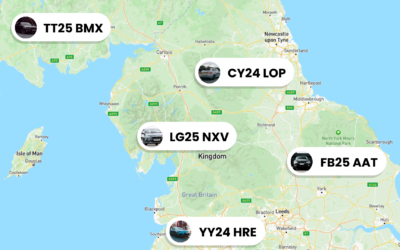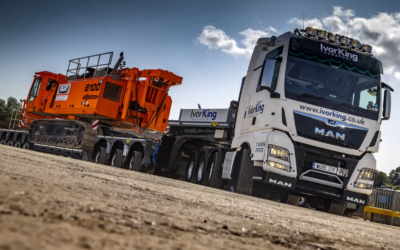Fleet Electrification Guide for Fleet Directors
1. Why Electrify Now
As a fleet manager, you’re juggling costs, compliance and uptime every day. Fleet electrification isn’t just a sustainability headline — it’s a strategic lever to reduce whole-life costs, future-proof operations against tightening regulations and bolster your company’s reputation. With fuel price volatility and increasing local emissions restrictions, electrifying select vehicle classes can stabilise operating expenses while delivering measurable carbon reductions.
Electrification also drives operational benefits: lower maintenance demands, quieter vehicles for urban routes and access to low-emission zones. That said, it’s not a one-size-fits-all switch. The right approach is data-driven and phased, balancing immediate wins with longer-term investments in chargers and grid upgrades.
Before committing, align electrification objectives with your wider fleet strategy — whether that’s reducing cost-per-mile, meeting corporate ESG targets or improving driver experience. Clear objectives will make it far easier to measure success and secure stakeholder buy-in.
2. Fleet Suitability Assessment
Start your electrification journey with a rigorous suitability assessment. Gather telematics, utilisation and duty-cycle data to understand where fleet electrification will deliver real value. Key metrics include daily mileage distributions, idle time, payloads, cycle frequency and seasonal variations.
Data collection & baseline metrics
Pull historical telematics and maintenance records for at least 6–12 months. Look for repeatable routes and average energy consumption. If you need help with data strategy, see our playbook on Fleet Telematics.
Route and duty-cycle analysis
Segment routes into clusters: short urban hops, medium-range deliveries and long-haul periods. Identify which clusters fit current EV ranges without operational compromise. Prioritise low-variance routes for early electrification.
Vehicle and asset segmentation
Not all vehicles are equal. Vans and last-mile vehicles often make excellent first candidates, while heavy-duty or high-payload units may require advanced planning or later phases.
Charging window and operational constraints
Map out when vehicles are idle — overnight depot windows are the simplest charging opportunities. Also flag peak operational hours where charging is infeasible, which will influence charger counts and power levels.
3. Total Cost of Ownership & Financial Modeling
Decision-makers live and die by numbers, so build a robust TCO model that compares ICE and electric options across purchase/lease, energy, maintenance, downtime and residual values. Include infrastructure costs — chargers, civil works and potential grid upgrades — not as an afterthought but as part of the core model.
TCO components to include
Factor in capital costs, energy per mile, expected battery degradation, service intervals and expected resale values. Include downtime risk and training costs to get a realistic picture of cost-per-mile over the vehicle lifecycle.
Incentives, grants and tax credits
Local and national incentives can materially change payback timelines. Make sure you’ve modelled rebates, grants and potential utility rate programmes. These incentives can turn marginal cases into clear wins.
Sensitivity & break-even analysis
Run scenarios for fuel and electricity price swings, varying utilisation and battery performance over time. Sensitivity analysis helps you identify the variables that most affect ROI and plan mitigations.
Financing options & accounting impacts
Consider leasing vs purchasing, charger pay-as-you-go, and energy service agreements. Each option has different balance-sheet and tax effects — involve finance early to choose the best structure for your organisation.
4. Charging Infrastructure Planning
Infrastructure is often the biggest operational hurdle for fleet electrification. Decide the mix of L1/L2/DC fast chargers you need based on duty cycles, depot layout and available grid capacity. The right mix reduces capital spend while ensuring uptime.
Charger types & power levels
Match charger power to vehicle needs: overnight depot charging usually uses AC L2 chargers, while on-route or high-utilisation vehicles may need DC fast charging to maintain schedules.
Site assessment & electrical capacity
Conduct a full site survey to understand transformer capacity, distribution board limits and civil works required. Early engagement with your utility avoids costly surprises and speeds permitting.
Charger placement & load management
Plan charger location for minimal manoeuvring and efficient cable management. Implement smart charging and load-shedding to avoid excessive demand charges and reduce peak loads.
Grid coordination & utility engagement
Talk to your local network operator about time-of-use rates, demand charge mitigation and potential incentives for managed load. In some regions, vehicle-to-grid (V2G) or V2B pilots can provide flexibility and revenue down the line. For further technical detail, our guide on charging infrastructure is a useful reference.
5. Operational Strategy & Driver Management
Operational changes determine whether your electrification succeeds. Develop clear charging strategies — depot-first, opportunity charging or a hybrid approach — based on route profiles. For many fleets, depot charging for overnight replenishment is the lowest-risk starting point.
Charging strategies (depot vs opportunity)
Depot charging is predictable and cost-effective; opportunity charging is useful for longer routes or variable schedules. Use both where it makes sense, backed by analytics to avoid over-investment in expensive DC chargers.
Route planning & optimisation for EVs
Use routing tools that consider range, topography and weather. Minor route tweaks can significantly reduce charging needs and increase daily utilisation of EVs.
Driver training and change management
Train drivers on charging etiquette, maximising regenerative braking and monitoring range. Clear communication about new procedures reduces range anxiety and operational friction.
Scheduling & uptime guarantees
Define SLAs for vehicle availability and build redundancy into schedules. Consider swapping strategies or pooled spare vehicles during the early phases to maintain service during teething issues.
Ready to see how this works in practice? Book a tailored demo with Traknova to explore how our telematics and energy management tools simplify fleet electrification deployment and protect uptime: Book demo.
6. Procurement, Contracts & Vendor Selection
Choose suppliers that understand fleets, not just consumer EVs. Your procurement must align vehicles, chargers, telematics and energy management into a cohesive ecosystem. Prioritise vendors who demo integration capabilities and provide clear SLAs for support.
RFP checklist and evaluation criteria
Include technical compatibility, warranty terms, service response times and total cost across the contract term. Ask for references from comparable fleet rollouts.
OEM, charger, and software vendor alignment
Ensure your vehicle telematics and charger management software exchange data seamlessly. Integration reduces manual work and enables centralised dashboards for performance monitoring.
Service-level agreements & warranties
Negotiate battery and charger warranty coverages, clear repair timeframes and spare-part availability. These terms directly affect downtime and TCO.
Procurement timelines and supply considerations
Factor in lead times, build schedules and potential supply-chain delays. Stagger orders where necessary and plan contingencies to avoid operational gaps.
7. Implementation Roadmap & Pilot Design
A well-designed pilot de-risks the broader rollout. Keep pilots focused: a small vehicle subset, defined charging setup and measurable KPIs. Use the pilot to validate assumptions about energy consumption, charger performance and driver behaviours.
Pilot objectives and scope
Set clear KPIs: cost-per-mile, uptime, energy consumption per km and driver satisfaction. Limit scope to manageable routes and vehicles to speed learning.
Phased rollout plan
Typical phases are pilot → limited rollout → scale. Use learnings from each phase to refine procurement, training and charger sizing for the next stage.
Stakeholder engagement and governance
Ensure regular updates to finance, operations, facilities and IT. Clear governance keeps approvals smooth and budgets aligned.
Timelines, milestones & contingency planning
Lay out realistic timelines with critical milestones (site works, charger commissioning, driver training). Include fallback plans for delayed supply or grid issues.
8. Maintenance, Battery Health & End-of-Life Planning
Electric vehicles change your maintenance profile: fewer fluid changes and simpler drivetrains, but extra focus on battery health and software updates. Plan for preventative checks that focus on electrical systems and cooling where applicable.
Differences in maintenance regimes
EVs typically reduce routine maintenance costs, but you’ll need diagnostic capability for battery and power electronics. Training workshops and parts planning should reflect these differences.
Battery monitoring & degradation management
Track state-of-health (SOH), charge cycles and software diagnostics. Telemetry that flags abnormal degradation lets you act early and preserve asset value.
Warranty claims, spare parts & service networks
Understand OEM warranty processes for batteries and ensure you have access to qualified service partners — especially if you operate outside major urban centres.
End-of-life options & residual value strategies
Plan for secondary markets, battery repurposing and recycling. Residual value assumptions should be conservative in your TCO models until the secondary market matures.
9. KPIs, Telemetry & Scaling Decisions
To scale wisely, you need clear metrics. Track cost-per-mile, energy-per-mile, charging-cost, uptime and battery SOH. These KPIs inform whether to accelerate investment or pause and optimise.
Core KPIs to track
Prioritise a short list of KPIs and link them to commercial targets: operational cost reduction, SLA attainment and emissions reductions. Regular reporting keeps stakeholders aligned.
Telemetry & analytics requirements
Integrate data from vehicles, chargers and energy systems into a single dashboard. If you want to read more about leveraging telematics for cost savings, check our Fleet Telematics guide.
Continuous improvement loop
Use KPI trends to refine route allocation, charging schedules and procurement strategy. Continuous small improvements compound into major savings over time.
When to scale vs pause
Set objective triggers for scaling — sustained cost-per-mile improvements, high vehicle uptime and predictable charger availability. If KPIs drift, pause new purchases and optimise operations first.
10. Risks, Compliance & Next Steps
Identify the main risks — grid reliability, supply-chain delays, resale uncertainty and cybersecurity — and document mitigations. Compliance with permitting, safety codes and incentive reporting must be baked into your project plan.
Key risks and mitigation tactics
Mitigations include staged procurement, utility-engaged load management, warranty buffer agreements and strong cybersecurity practices for telematics and charger networks. For data security best practice, review our guide on telematics and GDPR.
Regulatory & compliance checklist
Ensure you’ve accounted for planning permissions, building regulations and any reporting obligations tied to grants or tax credits. Non-compliance can delay deployments and jeopardise funding.
Actionable next steps for fleet directors
Start small: run a data audit, identify pilot routes, engage your utility and prepare a business case. Secure a pilot budget and set a 6–12 month review to evaluate progress. These steps keep momentum while limiting exposure.
Closing summary
Fleet electrification is an operational transformation, not a single procurement decision. By starting with data, modelling TCO realistically, planning chargers carefully and running a focused pilot, you reduce risk and capture benefits quickly. Keep KPIs simple, involve finance and facilities early, and prioritise vendor integration to avoid fragmented systems. When executed well, electrification reduces costs, improves urban access and aligns your fleet with future regulatory and commercial realities.
For a practical walkthrough tailored to your routes and vehicles, book a demo or consultation with Traknova — we help fleet managers map data to decisions and keep vehicles on the road: Book demo.
FAQs
How do I know which vehicles to electrify first?
Start with vehicles that have predictable, repeatable routes and lower daily mileage variance — typically vans and last-mile delivery units. Use telematics data to confirm suitability.
What grants or incentives should I consider?
Incentives vary by country and region. Include local, national and utility incentives in your TCO model. Speak to your finance team and local authority for the latest schemes.
How much depot power will I need?
That depends on vehicle counts, charging power and available charging windows. A site assessment with an electrical engineer and your utility will determine required upgrades and cost estimates.
Will EV maintenance be cheaper?
Generally yes — EVs have fewer moving parts. However, battery health monitoring and specialist diagnostics can create new maintenance requirements. Net lifecycle maintenance costs are often lower but depend on usage and vehicle class.
Feedback, shares & next steps
I’d love your feedback — did this guide answer the questions you have as a fleet manager about fleet electrification? Please share this article with colleagues and on social channels if you found it useful. What’s the biggest barrier to electrifying your fleet right now — cost, charging, or driver acceptance? Reply with your experience or post it on LinkedIn to start a discussion.
If you’re ready for a hands-on demo that maps your fleet data to a practical rollout plan, book a session with our team: Book demo. For any specific queries, feel free to contact us.




